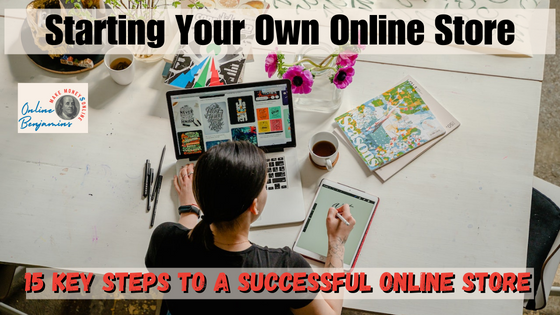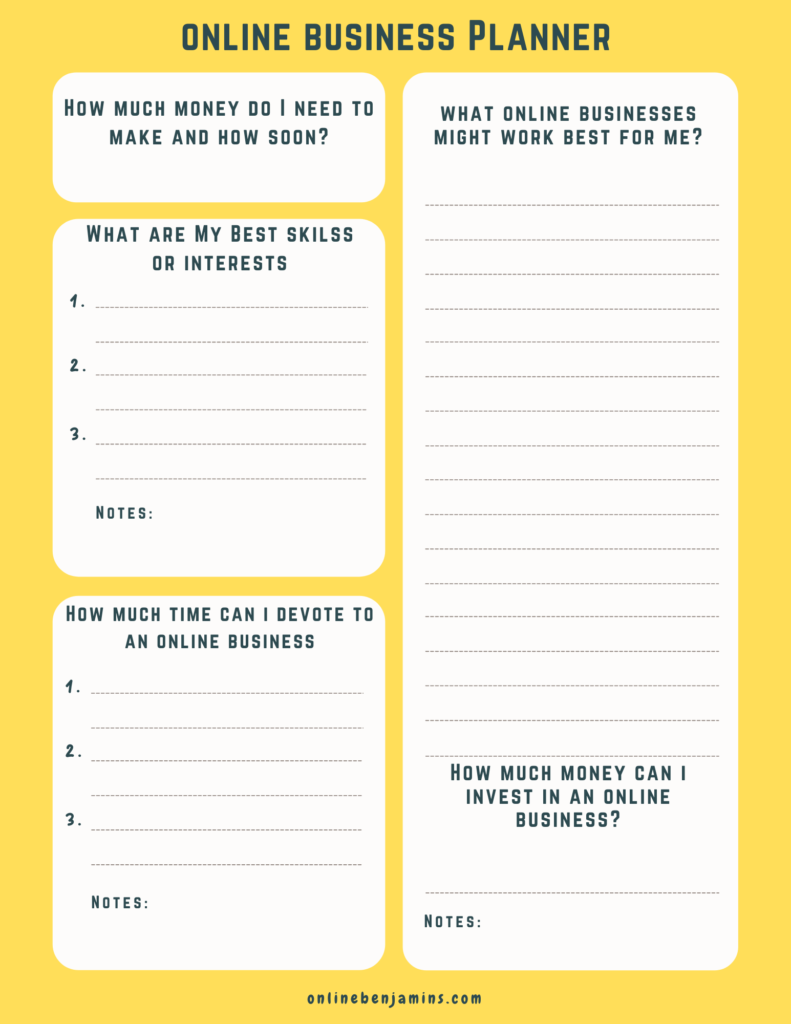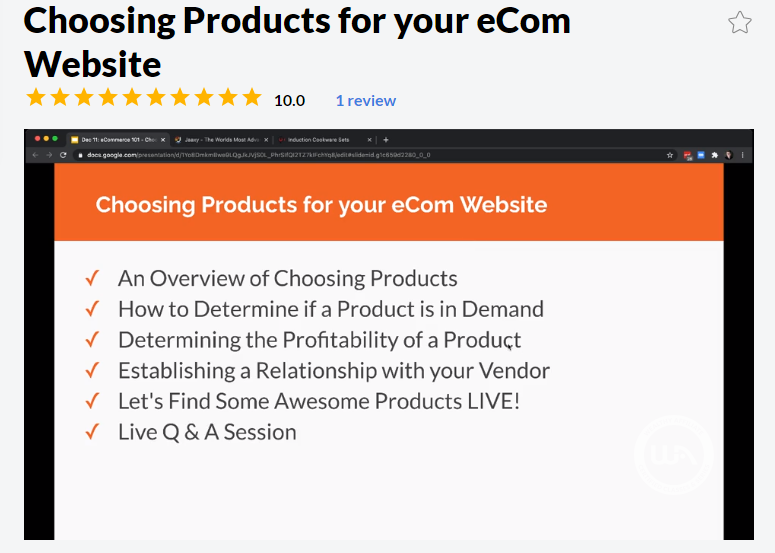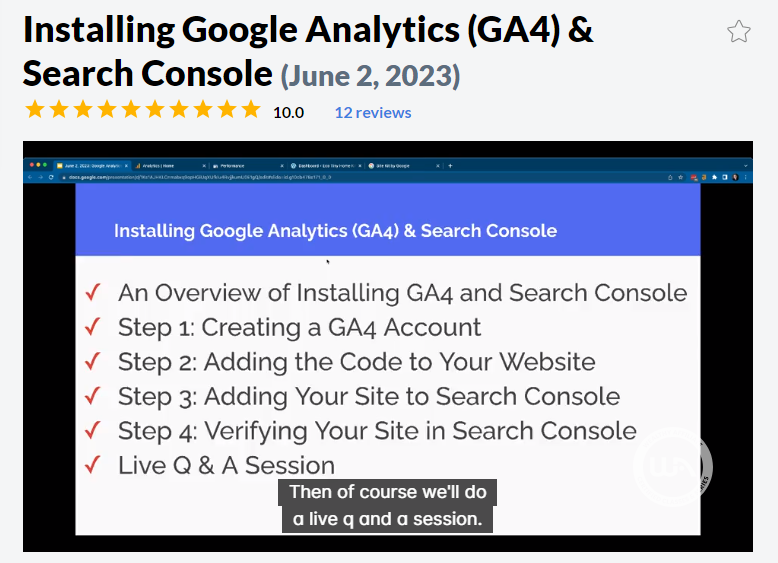So, you’re ready to embark on the exciting journey of starting your own online store. In this era where convenience and accessibility reign supreme, online stores have become a vital component of the retail landscape. With the rise of technology and changing consumer behaviors, brick-and-mortar shops are no longer the sole contenders for customers’ attention.
Online stores offer a unique platform for businesses to connect with a global audience, sell their products, and establish a digital presence. The online marketplace has witnessed exponential growth in recent years, making it an enticing avenue for entrepreneurs to explore. As more consumers shift towards online shopping, starting your own online store presents an exciting opportunity.
KEY POINTS:
The following Steps are essential When Starting Your own Online Store:
- Finding Your Niche: – The foundation of a successful online store lies in selecting the right niche. Your niche should align with your passion and expertise, while also having a sizable audience and demand.
- Research Your Audience: – Your will need to conduct thorough market research to understand your potential customers’ preferences, demographics, pain points, and buying behavior. This insight will guide your product selection and marketing strategies.
- Creating Your Unique Value Proposition: – A Unique Value Proposition (UVP) is what sets your online store apart from the competition. Clearly articulate what makes your products or services unique and how they address your customers’ pain points.
- Choosing the Right Products: – When starting your own online store, it is important to carefully curate products that solve a problem or fulfill a need for your target audience. Quality, uniqueness, and relevance are key factors to consider.
- Create Your Business Plan: – Craft a detailed business plan outlining your store’s mission, vision, target audience, competition analysis, revenue streams, and growth strategies. Like any venture, starting an online store requires a well-structured business plan.
- Selecting The Right Platform: – Choosing the right e-commerce platform is pivotal for your online store’s success. Consider factors such as ease of use, scalability, customization options, and pricing.
- Building Your Online Store: – One of the first tasks of starting your own online store, is design. You want to create a visually appealing store design that aligns with your brand’s identity.
- Launching and Marketing Your Store: – thoroughly test your website’s functionality and usability. Ensure that the checkout process is seamless, all links are working, and there are no technical glitches. Consider offering special promotions to celebrate your launch and attract initial customers.
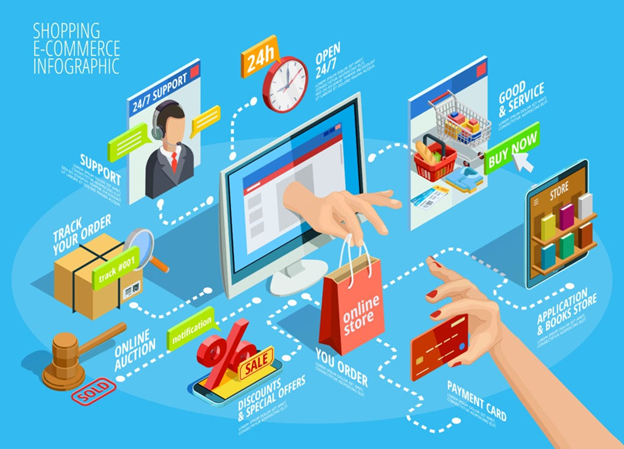
In fact, in today’s digital age, launching an online store can be an incredibly rewarding venture. However, diving into the world of e-commerce requires a well-thought-out approach.
Whether you’re a seasoned entrepreneur or just starting, we’ve got you covered with a step-by-step road map to help you succeed in the competitive world of e-commerce. I will even hook you up with a free trial of the online business platform I use for all of my online business.
From finding your niche to setting up your website and attracting customers, we’ll walk you through the essential stages of launching and managing a successful online store. Welcome to our comprehensive guide on starting your own online store! I Let’s dive in:
Finding Your Niche
The foundation of a successful online store lies in selecting the right niche. Your niche should align with your passion and expertise, while also having a sizable audience and demand. A well-defined niche helps you target a specific audience and stand out in a competitive market. Your niche, not only defines your target market, but the products you’ll offer, and the unique value you bring to the table.
Conduct thorough research to identify gaps in the market and assess potential profitability. While passion is crucial, finding the sweet spot between what you love and what sells is equally important. Research into market trends and consumer demands to help guide you towards a profitable niche that aligns with your interests.
Market Research: Understanding Your Audience
Now that you’ve decided on a niche to target. You will need to conduct thorough market research to understand your potential customers’ preferences, demographics, pain points, and buying behavior. This insight will guide your product selection and marketing strategies. Understanding your target audience is crucial for tailoring your offerings to their needs.
This knowledge will help you curate products and marketing strategies that resonate with your audience. Furthermore, conduct a competitor analysis to understand what similar businesses are offering and where you can differentiate yourself. This information will be invaluable as you craft your unique selling proposition.
Crafting a Unique Value Proposition (UVP)
A Unique Value Proposition (UVP) is what sets your online store apart from the competition. Clearly articulate what makes your products or services unique and how they address your customers’ pain points. A compelling UVP not only attracts customers but also builds brand loyalty.
There are millions of people selling online around the world. What makes your online store different? What sets you apart from the rest so customers choose your store instead of your competitors. Brand awareness and your Unique Value Proposition will move you ahead of most of the others.
Choosing the Right Products
When starting your own online store, it is important to carefully curate products that solve a problem or fulfill a need for your target audience. Quality, uniqueness, and relevance are key factors to consider. Decide whether you’ll source products from suppliers or create them yourself. Research potential suppliers, negotiate terms, and ensure product quality.
If you’re creating products, focus on delivering exceptional craftsmanship and innovation. Depending on your business model, decide whether you’ll opt for dropshipping, self-manufacturing, or third-party sourcing. Each approach has its pros and cons, so choose the one that aligns with your resources and goals. Implement robust inventory management practices to ensure product availability and timely fulfillment.
Creating a Business Plan
Craft a detailed business plan outlining your store’s mission, vision, target audience, competition analysis, revenue streams, and growth strategies. Like any venture, starting an online store requires a well-structured business plan. Outline your goals, both short-term and long-term. If you ever need to borrow money, the bank will require your business plan.
Define your product offerings, pricing strategy, and projected revenue. Additionally, detail your marketing and promotional strategies, including how you’ll reach and engage your target audience. It’s one thing to start your own online store, it’s another thing to get customers to your store. They have to find you before they can buy from you.
Selecting the Right Platform
Choosing the right e-commerce platform is pivotal for your online store’s success. Consider factors such as ease of use, scalability, customization options, and pricing. Popular platforms like Shopify, WooCommerce, and BigCommerce offer various features like user-friendly interfaces, customizable templates, and integrated payment gateways, to help you create a seamless online shopping experience.
The e-commerce platform you choose will serve as the backbone of your online store. Consider factors such as scalability, ease of use, and the ability to accommodate your unique business needs.
Building Your Online Store
Once you Select an e-commerce platform that suits your needs. Secure a domain name that reflects your business name and is easy to spell. A professional domain adds credibility to your online store. Choose a memorable and descriptive name. Ensure that it resonates with your brand’s identity, is related to your chosen niche, and is easy to remember.
Designing Your Store: Branding and Layout
One of the first tasks of starting your own online store, is design. You want to create a visually appealing store design that aligns with your brand’s identity. Maintain a clean and organized layout to enhance user experience.
A visually appealing and user-friendly website design enhances customer experience. Opt for a clean and intuitive design, easy navigation, and high-quality images of your products.
Mobile responsiveness is essential, given the increasing number of mobile shoppers. Your online store’s design significantly impacts user experience and perception. Opt for a professional, responsive theme that reflects your brand identity. Customize the layout, color scheme, and branding elements to create a store that is easy to navigate and easy to buy from.

Product Listings: High-Quality Content and Imagery
Content is king in the online realm. High-quality images from different angles, for example, give customers a clear understanding of what they’re purchasing. Craft informative and accurate product descriptions, blog posts, and guides related to your niche. Valuable content not only engages visitors but also establishes your authority in the industry.
Compelling product listings are the bridge between your products and potential customers. Detailed and persuasive product descriptions that highlight the features, benefits, and solutions your products offer are key. Accompany these descriptions with images and, where possible, videos to give customers a comprehensive view of what they’re purchasing.
Setting Up Secure Payment Gateways
Security is paramount when dealing with online transactions. Integrate secure and convenient payment gateways to ensure smooth transactions and customer information is protected. Popular options include PayPal, Stripe, and Square. Display trust badges to reassure customers and encourage them to make purchases confidently. Customers’ trust is paramount in the online sphere.
Launching Your Online Store
As the launch date approaches, thoroughly test your website’s functionality and usability. Ensure that the checkout process is seamless, all links are working, and there are no technical glitches. Consider offering special promotions to celebrate your launch and attract initial customers.
Once you’re confident in its performance, make your online store live. Announce your store’s launch through social media, email marketing, and other channels. Be prepared to address any potential technical glitches that may arise in the initial stages.
Implementing SEO Strategies
To outrank competitors and attract organic traffic, develop a robust SEO strategy. Optimize your product listings and website for search engines. Conduct keyword research to identify relevant search terms, optimize product descriptions and meta tags, and build high-quality backlinks from reputable sources to improve your search engine rankings.
Search engine optimization (SEO) is crucial for making your online store discoverable. Generate SEO-friendly URLs and sitemaps to ensure search engines index and rank your pages effectively. And remember, content is kind. High-quality content will rank higher ins search engines faster resulting in more traffic and more sales much quicker. Learn more about SEO with this free video.
Marketing and Promotion
Starting your own online store requires a robust marketing strategy if you want to be successful. Utilize various marketing strategies such as social media marketing, influencer collaborations, content marketing, email campaigns, and paid advertising to engage your audience and to drive traffic to your store. Collaborating with suppliers and affiliates can also extend your reach and credibility.
Customer Service and Engagement
Exceptional customer service is the backbone of customer retention and positive word-of-mouth. Implement various channels for customer support, such as live chat, FAQs, and responsive email communication. Have clear and hassle-free return policies. Handle customer complaints, questions or concerns in a timely manner.
Remember, when starting your own online store, there are only two rules: 1.) The customer is always right. And 2.) If the customer is wrong, see rule #1. 😉
Analyzing and Optimizing Performance
After launching, continuously monitor your store’s performance. Utilize tools like Google Analytics to track visitor behavior, conversion rates, and other key metrics. Use this data to identify areas for improvement and refine your strategies accordingly. Implement an efficient inventory management system to track stock levels, restock products, and prevent overselling.
Pros and Cons of Starting Your Own Online Store
Pros of Starting Your Own Online Store:
| Pro Feature | Description |
|---|---|
| Low Barrier to Entry: | Starting your own online store is relatively easy and affordable compared to setting up a physical store. You can get started with minimal upfront costs. |
| Global Reach: | E-commerce allows you to reach a global audience, expanding your customer base beyond geographical limitations. |
| 24/7 Accessibility: | Your online store is accessible to customers around the clock, providing the convenience of shopping at any time. |
| Reduced Overheads: | Operating costs are generally lower in e-commerce, as you don’t need to worry about renting or maintaining a physical storefront. |
| Targeted Marketing: | Digital marketing tools allow you to target specific demographics and track the effectiveness of your campaigns more precisely. |
| Wide Product Range: | You can offer a variety of products without the constraints of physical space, giving customers more choices. |
| Scalability: | E-commerce platforms offer features that make it easier to scale your business as it grows. |
| Data-Driven Insights: | Online analytics provide valuable insights into customer behavior, allowing you to make informed business decisions. |
| Flexibility: | E-commerce allows you to manage your business from anywhere, providing greater flexibility in your work environment. |
| Niche Markets: | You can cater to specific niche markets, offering products that might not be feasible in a physical store. |
Cons of Starting Your Own Online Store:
| Con Feature | Description |
|---|---|
| Competition: | The e-commerce landscape is highly competitive, with many established players. Standing out requires unique selling points and effective marketing strategies. |
| Technical Learning Curve: | Beginners might need to learn about website setup, e-commerce platforms, payment gateways, and other technical aspects. |
| Initial Investment: | While it’s generally more affordable than a physical store, there are still costs associated with setting up a professional e-commerce website, sourcing products, and marketing. |
| Customer Trust: | Building trust with customers online can be challenging, especially if you’re a new and unknown brand. |
| Security Concerns: | Handling customer data and payment information requires strong security measures to prevent breaches and maintain customer trust. |
| Logistics and Shipping: | Efficiently managing shipping, returns, and customer service can be complex, especially as your business grows. |
| Dependence on Platforms: | If you rely solely on a third-party e-commerce platform, you’re subject to their policies and changes. Building your own platform provides more control but requires more technical expertise. |
| Marketing Demands: | Effective online marketing is crucial for success. Learning and implementing strategies for SEO, social media, and digital advertising can be time-consuming. |
| Customer Experience: | Providing a seamless online shopping experience is essential. Any issues with website functionality, checkout process, or customer support can affect sales. |
| Lack of Personal Interaction: | Unlike physical stores, e-commerce lacks the face-to-face interaction with customers, which can impact brand loyalty and customer engagement. |
Remember that every business is unique, and these pros and cons can vary based on your specific niche, target audience, and business approach. It’s important to thoroughly research and plan before diving into the world of e-commerce.
Start an Online Store and Be Your Own Boss
Congratulations! Now you’re ready to embark on the exciting journey of building a successful online store. Remember that consistency, adaptability, and exceptional customer service are the cornerstones of e-commerce success and key as you navigate the dynamic world of online retail. .
Starting your own online store is an exhilarating venture that requires careful planning and execution. By following these step-by-step guidelines, you’ll be well-equipped to create a successful e-commerce business that caters to your target audience’s needs.
If you’re serious about starting your own online store, I recommend you check out my #1 recommended platform and get all the tools, training and support you need to build a successful online business. Be your own boss, build your business instead one for your employer. The time has never been better, the choice is yours. Are you ready to take action and leave the 9-5 rat race?
Frequently Asked Questions on Starting an Online Store
How much capital do I need to start an online store?
Starting costs vary but include expenses like product sourcing, website development, and marketing. A ballpark figure can range from a few hundred to a few thousand dollars.
Do I need coding skills to build an online store?
No, many e-commerce platforms offer user-friendly interfaces that require little to no coding knowledge.
What’s the best way to handle shipping and logistics?
You can partner with third-party logistics providers or use dropshipping to simplify shipping processes.

How long does it take to see significant sales?
Sales timelines vary, but it’s important to focus on building a strong foundation and gradually scaling your efforts for sustainable growth.
How can I ensure the security of customer transactions?
Implement SSL certificates, choose secure payment gateways, and regularly update your website’s security measures to protect customer data.
I’m Looking forward to working with you,

- onlinebenjamins.com
- thebeachangler.com
- thesinnerinthemirror.com
- my.wealthyaffiliate.com/rex10
- Facebook: Online Benjamins
- Twitter: @onlinebenjamin1
- Instagram: dotcomdinero
Rex
P.S. If you have any questions or are unsure of anything, I am here and I promise I will get back to you on all of your questions and comments. Just leave them below in the comment section. Follow me on Twitter: @onlinebenjamin1, Instagram: dotcomdinero, and Facebook: Online Benjamins
P.P.S – Thanks so much for checking out our blog we really appreciate it. Just so you know, we may receive a commission if you click on some of the links that appear on our site. This helps us keep our content free and up-to-date for everyone. We appreciate your support!
Hi,
Thanks for stopping by and congratulations for taking the first steps to building your own online business. I’ve been in business both offline and online since 1997. I would consider it an honor to help you build your business. Father of 3, life long outdoorsman with an education in Genetics and Economics. This site is about cutting through the BS and finding the real opportunities in the online world. I look forward to working with you.

